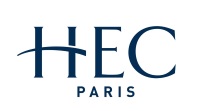No 1348: Credit Rating Agencies and Accounting Fraud Detection
Allen H. Huang, Pepa Kraft and Shiheng Wang
Additional contact information
Allen H. Huang: Hong Kong University of Science and Technology - Department of Accounting
Pepa Kraft: HEC Paris
Shiheng Wang: Hong Kong University of Science & Technology (HKUST)
Abstract: This study examines whether and when credit ratings are useful for accounting fraud prediction. We find that negative rating actions by Standard & Poor’s (S&P), an issuer-paid credit rating agency (CRA), have predictive ability for fraud incremental to fraud prediction models (e.g., F-score) and other market participants. In contrast, rating actions by Egan-Jones Rating Company (EJR), an investor-paid CRA relying on public information, have less predictive ability, which is subsumed by S&P and other market participants. Our results are robust to including firms not covered by EJR, using only rating downgrades, controlling for firm characteristics, and using alternative benchmarks. We also find that the ability of negative S&P rating actions to predict fraud becomes stronger after the 2008–2009 financial crisis. Last, compared to EJR, S&P is quicker to take negative rating actions against fraud firms. In sum, our results suggest that issuer-paid CRAs’ information advantage helps predict accounting fraud.
Keywords: accounting fraud; fraud prediction; credit rating agency; issuer-paid rating agency; investor-paid rating agency; F-score
51 pages, August 21, 2019
Full text files
papers.cfm?abstract_id=3438846 HTML file Full text
Questions (including download problems) about the papers in this series should be directed to Antoine Haldemann ()
Report other problems with accessing this service to Sune Karlsson ().
RePEc:ebg:heccah:1348This page generated on 2025-06-10 11:14:56.

